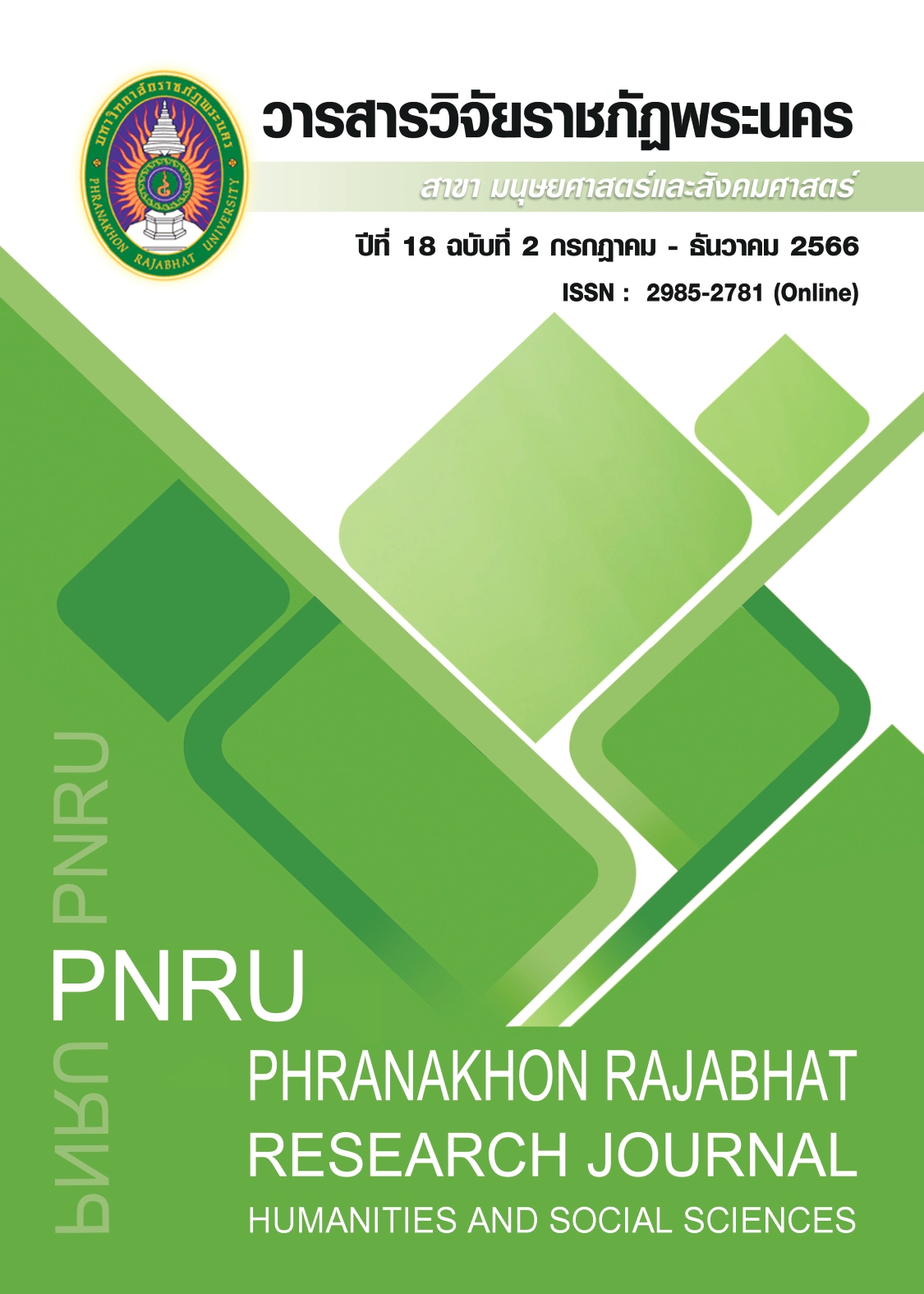LISTENING ACHIEVEMENTS OF THE BUSINESS CHINESE PROGRAM FIRST-YEAR STUDENTS OF DHURAKIJ PUNDIT UNIVERSITY FROM THE APPLICATION OF INPUT HYPOTHESIS IN THE CHINESE LISTENING AND SPEAKING COURSE
Main Article Content
Abstract
This research aimed to compare the Chinese listening achievements of first-year students before and after the application of Krashen's input hypothesis in classroom learning and to explore the attitudes of the students towards the Chinese Listening and Speaking Course after the application of the input hypothesis. The total sample was 25 students with the purposive sampling technique. The students were business Chinese students at the Faculty of Arts, Dhurakij Pundit University, enrolling in the first semester of the 2022 academic year. The research instruments consisted of a Chinese language proficiency test and an attitude survey conducted before and after the application of the input hypothesis. Statistical methods used to analyze data included percentages, averages, standard deviations, and the paired sample t-test.
The results showed significant improvement in the students’ listening achievements in all five aspects with statistical significance at the 0.05 level after the application of the input hypothesis within the classroom. Furthermore, the students’ overall attitude towards the course was found to be at a high-satisfaction level.
Article Details

This work is licensed under a Creative Commons Attribution-NonCommercial-NoDerivatives 4.0 International License.
Each publish articles were copyright by Phranakorn Rajabhat University
Any contents which appeared in each articles in the journal were authors personal opinion. It did not relate to Phranakorn Rajabhat University and other instructors in the university. Each authors would take responsibility on their articles. If there are any mistake, the authors will take responsibility themselves
References
Best, J.W. (1981). Research in Education. (4). New Jersey: Prentice Hall.
Chotikan. J. (2020). The Experiment Using Blended Learning in Chinese Program (Listening and Speaking Course) and the first year student’s satisfaction survey of Dhurakij Pundit University [Paper Presentation]. The 5th National and the 2nd International Conference on Education, Nakhon Rajchasrima.
Gao, M. (2013). The Enlightenment of Krashen's Language Input Hypothesis on Chinese Teaching Listening Course. Intelligence, (11), 65.
Huang, W.L. (2017). Research for Thailand Ramkamhaeng University of Chinese Listening and Speaking Course (Master dissertation). Sichuan Normal University. Sichuan.
Kang, M.Y. (2016). The Application of Communicative Approach in Intermediate Chinese Listening and Speaking Teaching in Thailand (Master dissertation). Xi'an International Studies University. Xi'an.
Krashen, S.D. (1985). The Input Hypothesis: Issues and Implications, New York: Longman.
Krashen, S.D. (1982). Principles and Practice in Second Language Acquisition. New York: Pergamon Press.
Liang, S.Y. (2019). Teaching Design of Intermediate Listening and Speaking Course of Chinese as A Foreign Language Based on Flipping Classroom Teaching Mode. (Master dissertation). Harbin Normal University, Harbin.
Lu, J.J. (2009). Clarifying Two Important Facts in the Evolution of Teaching Chinese as a Foreign Language. TCSOL Studies, (03), 5-6.
Meng, X.T. (2020). The Application of Krashen's "Language Input Hypothesis" in Online Oral Chinese Teaching for Foreign Languages: A Case Study of the Chinese Summer Camp at Dongxin High School in South Korea. Prose Hundred, (08), 102-103.
Meng, Y.H. (2011). The Elements of the Open Teaching Model in Elementary Chinese Listening and Speaking Classes. In Cui Xiliang, Research on Classroom Teaching of Listening and Speaking Chinese as a Foreign Language, (02), 72-79
Ning, Y.M. (2020). A Research on the Application of GPA Teaching Method in Elementary Level of Listening and Speaking Chinese as A Second Language Class. (Master dissertation). Southwest Minzu University, Chengdu.
Petroj, L. & ChamniPrasart, A. (2004). Research Methodology, Bangkok: Pimdeekarnpim.
Qian, C.R. (2017). The Applied Research on ‘The Input Hypothesis’ and ‘The Affective Filter Hypothesis’ of Krashen in Elementary Chinese Speaking Course. (Master dissertation). Chongqing Normal University, Chongqing.
Tian, L. (2011). Reflections on the Teaching Principles of Listening and Speaking in Elementary Chinese. In Cui Xiliang, Research on Classroom Teaching of Listening and Speaking Chinese as a Foreign Language (02), 63-70
Tohyoh, N. (2012). Effects of instruction based on the natural approach on English proficiency of preparatory level learners. (Master dissertation). Prince of Songkhla University, Songkhla.
Wang, Q.Y. (2009). The Discussion on the main source of language input in teaching Chinese as a foreign language. Journal of Hubei Correspondence University, 22(1), 109-110.
Wang, X.F. (2019). Exploration in Krashen's Input Hypothesis and Teaching Chinese as a Foreign Language. Northern Literature, (2), 136-137.
Xue, C. (2013). Strategic teaching Chinese Listening and Speaking for Thai Students-Thailand North- Chiangmai University as Example. (Master dissertation). Jilin University. Jilin.
Yanggang, P. (2013). Second Language Acquisition and Universal Grammar. CONNEXION Journal of Humanities and Social Sciences, 2(1), 104–126.
Yang, J.Q. (2014). The Enlightenment of Language Input and Output on Teaching Spoken Chinese as a Foreign Language. Young Writers, (20), 43-44.


